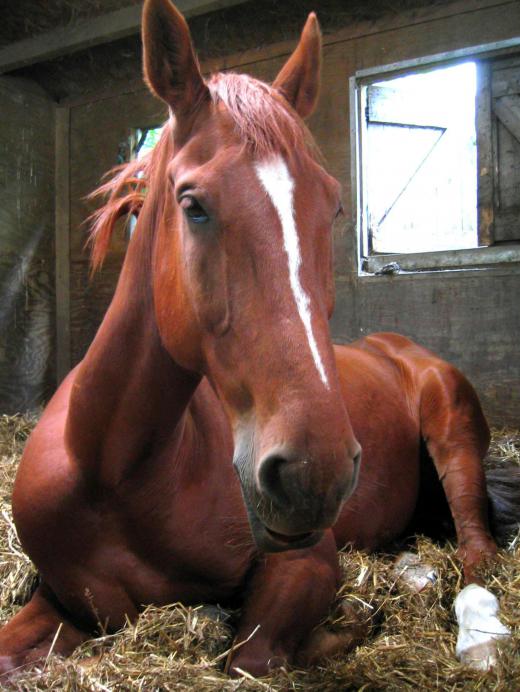Stall casting can be a frightening and dangerous experience for both you and your horse. It occurs when your horse lies down or rolls in his stall and gets trapped too closely to the wall. When this happens, he can’t get his feet under himself to get enough leverage to stand up. Stall casting is very dangerous and most horses get injured if they become frightened and begin thrashing. Exhaustion to the point of shock is another concern with a panicked horse.
If you find your horse has cast himself, the most important thing you can do is stay calm. Your horse will need to rely on you to prevent him from panicking. Talk to him quietly and assure him he will be all right. If help is close by, secure one or two helpers.

If your horse is relatively quiet, go in his stall with your assistant. If it seems possible, you can try to shift him slightly by pulling him around by the tail. If this is not an option, loop a longe line around each of the furthest fore and hind legs, while your assistant holds your horse’s head and assures him. Stand back and pull equally on both longe lines to turn him over, towards you. If there is room, it would be helpful for your assistant to pull your horse’s head over at the same time. Let go of the rope as soon as your horse has rolled past his withers, as he will then be able to get himself up normally. It is important to give him space, as he will probably be moving quickly at this point.

If your horse is too panicked for you to safely help him, it is best to sedate him. If you have an assistant, have him or her hold your horse’s head for security while you inject him with a low dose sedative, such as acepromazine. This should begin working quickly, and then you can proceed with the longe line technique to turn him over so he can regain his footing.
Once your horse is upright, check for injuries and assess his state of well being. If he required sedation, it is best to have your veterinarian visit to assess that your horse has not injured himself. Offer your horse water but allow him to settle down before resuming eating.
The easiest preventative measure for stall casting is to bank your stalls. This involves adding a row (or bank) of bedding along each wall of your stall. It should be at least 6 inches (15.24 centimeters) high and 6 inches (15.24 centimeters) wide. This will prevent your horse from being able to get too close to the walls of his stall. Other options for stall casting are safety strips. These raised rubber projections create a surface your horse can use to push himself off the wall. Tongue and groove panels will also give your horse the necessary leverage to right himself.
Stall casting is seldom traumatic and doesn't usually result in injury. Some horses will assess their predicament and wait for help to arrive while others will leverage their hoof against a wall and push themselves back enough to be able to stand. A stall casting can present quite a frightening picture but with care it is usually possible to help your horse to his feet, even if you are alone.
